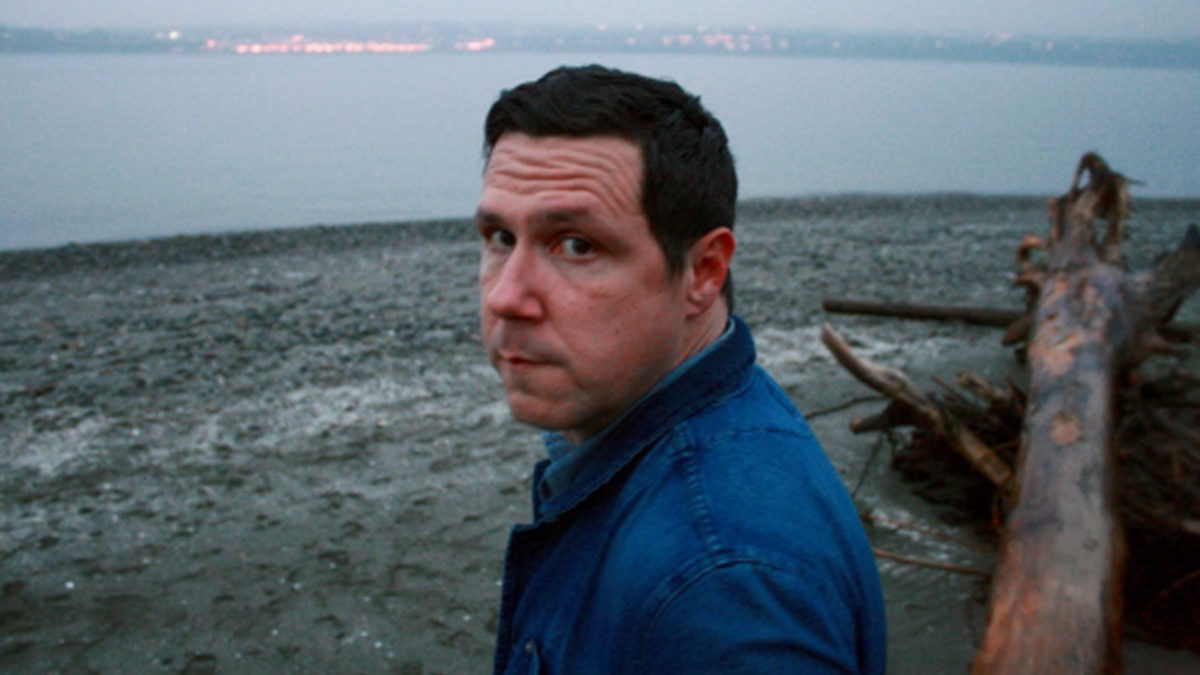Damien Jurado

Providing the ideal entry point for neophytes and an intoxicating aural high for the faithful, Damien Jurado’s new opus extends the hot streak ignited by 2012’s Maraqopa and its 2014 follow-up Brothers and Sisters of the Eternal Son. Cut once again with label mate and super producer Richard Swift at the latter’s National Freedom recording facility in rural Oregon, Visions of Us On The Land completes the tale of an individual who has had to disappear from society in order to discover some universal truths.
There was no grand scheme to make a trilogy at the outset. Exuberantly prolific, its creator simply wanted the first record to be “a quick snapshot. But it’s become something that lives in a huge way in my conscience. Maraqopa is this peaceful place I can go to in my mind. A little bit psychedelic, but you’re not using substances. The brain is such a powerful thing. In that uncharted territory I was able to tap in and find this place. Which was called Maraqopa. Similar to the fictional towns in television or books.”
Maraqopa the album introduced a character — deliberately unnamed, intended to represent anyone feeling that way — who stumbles upon the titular locale then gets into a car crash… which only frees him further. Jurado notes parallels between his wilderness avatar and Syd Barrett’s exit from public life. Plus a classic episode of The Twilight Zone which ends with the previously active protagonist’s still body, eyes closed, on a hospital table. “Because he’s living out what he thinks is a reality in his unconscious state. But the guy doesn’t even know he’s in a coma! Wouldn’t that be strange, if your death was really you waking up? This is what Maraqopa embodies. But trying to do that musically is really hard. In some ways it’s creating a soundtrack.”
Movie music, from the storied scores for Zabriskie Point and Blade Runner to the more recent The Martian, has long been part of Damien’s diverse sound palette. When they began their collaboration at the top of this decade, he and Swift additionally bonded over psych, proto-punk and outsider rock ‘n’ roll nugget miners like Captain Beefheart, The Cramps, Bo Diddley and The West Coast Pop Art Experimental Band. Not to mention such softer dream weavers as Linda Perhacs and Gordon Lightfoot. This tapestry of influences — cinematic, lysergic, folkloric — threads seamlessly with the pair’s natural pop craftsmanship. Brothers and Sisters of the Eternal Son scored chart positions in both the US and UK, while elevating the esoteric art quotient to mythical levels. It picked up the narrative after the accident, in a commune inhabited by Silver Timothy, Silver Donna, Silver Malcolm, et al.
“I’ve never lived in one but I have friends who grew up in ‘Jesus freak’ communes in the late ‘70s. To me it’s fascinating because it’s all ritual. There was also talk and visuals of UFOs around Brothers and Sisters… A lot of it is photos. I met a guy on tour after I made Maraqopa who asked if I knew about Drop City, which was a commune in the ‘60s in Colorado. They built these geodesic domes, created their own little community. What’s funny is when I looked at photos of Drop City later, it looked exactly like my vision of Maraqopa.”
Visions of Us On The Land journeys further into the subconscious mind, a symbolic road trip spotlighting the people and towns that our central figure and his travelling companion, Silver Katherine, encounter upon leaving the commune. Hence the capitalized track titles, alluding to real American locations refracted through one’s third eye in the rear view mirror. Like all great art, it’s about life and death and love and freedom. A sonic map with no set destination, revealing more with each ride.